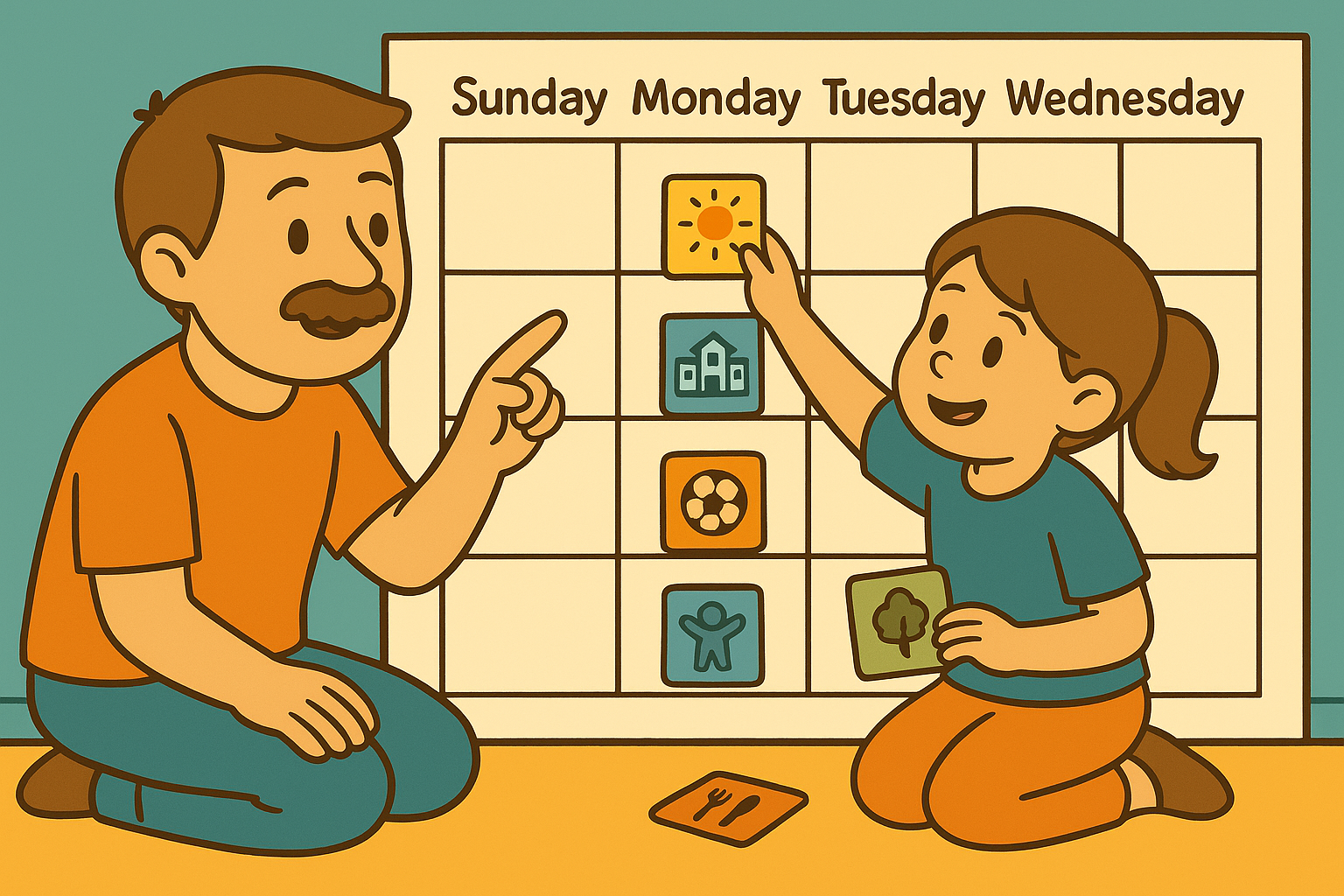Teaching Kids How to Plan Their Week
Teaching Kids How to Plan Their Week
Why Weekly Planning Builds Confidence in Children
Young children love feeling part of something bigger than a single moment — and learning to plan their week gives them that experience. Planning doesn’t just create structure; it creates ownership. When a child begins to understand what is coming up over the next few days, they feel more secure, more prepared, and more capable. Week planning helps reduce anxiety and fosters emotional regulation because predictability lets children relax into routines rather than resist them.
Planning is not about expecting kids to control their schedule — it is about helping them witness the rhythm of life and their place within it. That awareness grows into confidence and responsibility over time.
Start With a Simple Weekly Flow — Not a Detailed Calendar
Children don’t need hour-by-hour schedules. Instead, begin with a gentle overview:
What days are school days?
When is playtime or activity time?
When is rest or stay-home time?
Are there any appointments or surprises coming?
A visual weekly flow helps reduce uncertainty and build anticipation. This mirrors ideas seen in The Role of Predictability in Reducing Tantrums, where emotional safety is strengthened through consistent rhythms children recognize.
Use Visual Tools That Children Can Understand Quickly
Children process information best through pictures and symbols. To teach planning, try:
A magnetic board with icons (school, visit, playdate)
Color-coded days (blue = quiet days, green = activity days)
A simple 7-box sheet for weekly preview
Sticky notes that move when plans change
Let kids help create or arrange the visuals — ownership increases engagement. This connects with strategies in Building Independence Through Routine Choice, where choice-based participation strengthens motivation.
The Conversation That Starts the Plan
Kids don’t need professional planning tools — they need warm conversation. Here are simple prompts that open the week gently:
“What are you excited about this week?”
“Do you remember anything happening later this week?”
“Is there anything that might be tricky, and how could we make it easier?”
“Which day should feel the most restful?”
The focus isn’t to build productivity — it’s to build awareness. Thinking ahead helps children process emotions before challenges arrive.
Predictable Anchors That Help Break Up the Week
Weekly planning is easier when children can identify “anchor moments,” such as:
Friday movie night
Wednesday dinner with grandparents
Saturday morning pancakes
Sunday outdoor walk
Library day
Anchors provide emotional buoyancy, especially during busy or challenging weeks. This principle supports the guidance shared in How to Create “Anchor Moments” Kids Can Count On, where anchors protect family energy during transition-heavy days.
Teaching Kids How to Notice Their Own Needs
Planning isn’t just about what happens — it’s about preparing the body and heart. Ask:
“Do you need a rest day after this?”
“Does this day feel loud or quiet?”
“Would a calm activity help before that event?”
“When could your feelings use extra space?”
This helps children build emotional foresight, a key step in long-term regulation. Planning becomes a conversation, not a checklist.
Making Time for Rest and Play
Kids sometimes fill their own schedule faster than adults do. Teaching them that free space counts too is important. Weekly plans should always include downtime — and labeling it clearly helps normalize rest. Use labels like:
“Home time”
“Relax space”
“Play recharging”
“Quiet morning”
Downtime teaches children that balance is part of planning — not an accident.
Letting Kids Make Small Decisions
Even small planning choices promote independence. Try:
“Should we do art on Tuesday or Thursday?”
“Do you want a walk before the park or after?”
“Which day should we try something new?”
When children make choices that fit within structure, planning becomes inviting rather than intimidating.
Practicing Flexibility When Plans Change
A key goal is to help children understand that plans can change — and that change isn’t scary. If something shifts, walk through it together:
“This plan moved, but here’s what will stay the same.”
“We’ll change this card to tomorrow.”
“Let’s make a new idea for this day.”
Flexible planning supports emotional flexibility — a vital life skill children can learn early.
Ending the Week With Reflection
Weekly planning isn’t only about looking forward — it’s also about looking back. Reflection helps children see growth:
“What was fun this week?”
“What felt hard?”
“What helped on those tricky days?”
“What would you repeat next week?”
Small weekly reflections begin to form an internal voice — one that learns from experience rather than reacting to it.
The Real Goal: Awareness, Not Perfection
Teaching kids to plan their week is not about control — it is about clarity and connection. Planning teaches children that life flows in patterns, and that routines can feel comforting, not restricting. Children eventually begin to think ahead on their own — not because someone told them to, but because they grew accustomed to the rhythm of planning.
The weekly plan doesn’t need to be perfect. It just needs to be shared. Because planning isn’t about managing time— It’s about feeling ready to meet it.
This content is for educational purposes and is not a substitute for professional medical or psychological advice.
Popular Parenting Articles


